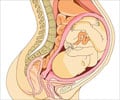
"The prevention of stillbirth through early delivery of the compromised fetus is considered the cornerstone of modern obstetrics," writes Dr. K.S. Joseph, Department of Obstetrics and Gynaecology and School of Population and Public Health, University of British Columbia, with coauthors. "The recent trends in stillbirth rates are therefore disquieting given developments in fetal surveillance techniques, increased monitoring of high-risk pregnancies and simultaneous increases in obstetric intervention."
To understand the reasons for these recent increases, BC researchers looked at data on all stillbirths of 20 weeks' gestation or older in the province from 2000 to 2010. There were 461 083 live births and 3991 stillbirths in the 10-year period. The rate of stillbirths increased 31%, from 8.08 per 1000 total births in 2000 to 10.55 per 1000 in 2010. Stillbirths among fetuses under 500 g birth weight increased significantly, from 2.36 per 1000 total births to 2.84 per 1000 but decreased from 2.73 to 1.95 per 1000 total births in the 1000-g or heavier category. Stillbirths before 22 weeks' gestation increased from 2.71 per 1000 total births to 3.71 per 1000. The study found that the increase in stillbirth rates was due to increases in prenatal diagnosis and pregnancy termination of fetuses with congenital anomalies or other reasons.
"Increases in pregnancy terminations were responsible for the increases observed in stillbirth rates from 2000 to 2010 and were associated with declines in the prevalence of congenital abnormalities among live-born infants," write the authors.
After excluding stillbirths due to pregnancy terminations, the researchers found a non-significant decline in the rate of spontaneous stillbirths.
They suggest that "advances in, and increased uptake of, prenatal diagnosis are having a population-level impact on the timing of death and the gestational age at delivery of fetuses with congenital anomalies."
Advertisement
"Future research examining temporal trends and regional variations in stillbirth rates should focus separately on spontaneous stillbirths and those due to pregnancy termination," they conclude.
Advertisement











